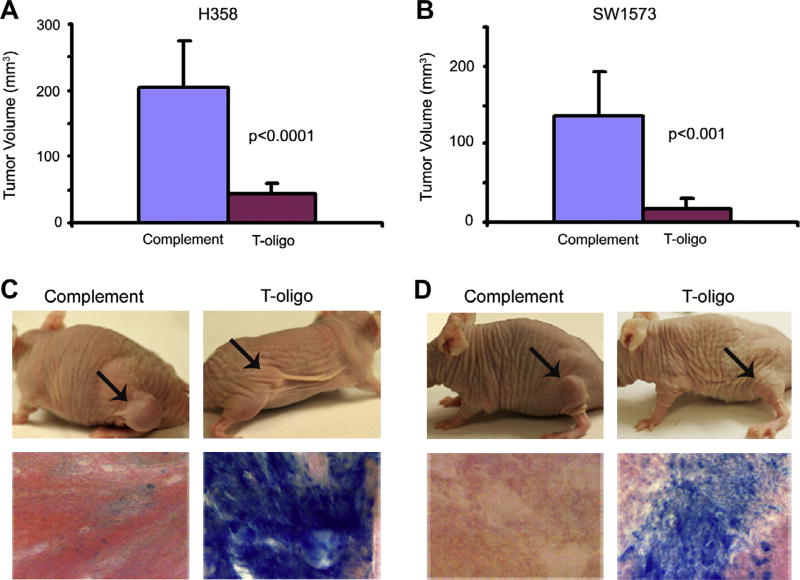Fig. 5.
H358 and SW1573 lung cancer cells (5 × 106) were injected subcutaneously into the flank of nude mice. Tumors were allowed to grow for one week and then treated daily with T-oligo or complementary oligo in PBS for seven weeks. (A) T-oligo reduced tumor volume by 4.3-fold in H358 as compared to complementary oligo. (B) T-oligo reduced tumor volume by 5.6-fold in SW1573 tumors as compared to complementary oligo. (C,D). Both H358 and SW1573 tumors treated with T-oligo showed markedly reduced tumor volume and significant increase in expression of senescence-associated β-Galactosidase staining.

